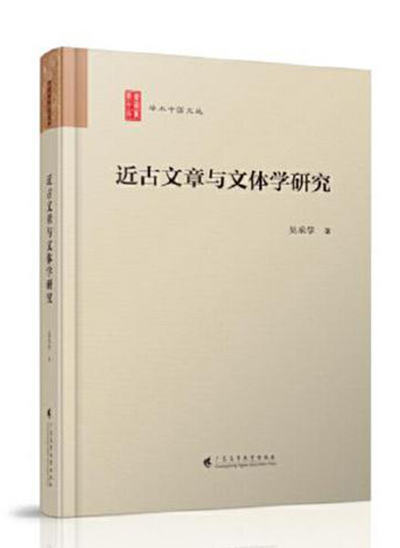Stylistic features in late ancient China

A Study of Articles and Stylistics in Late Ancient China
A Study of Articles and Stylistics in Late Ancient China, authored by Wu Chengxue, a professor from the Department of Chinese at Sun Yat-sen University, focuses on the essay composition theory and stylistics of the Song (960–1279), Ming (1368–1644), and Qing (1644–1911) dynasties.
Wu conducts an in-depth investigation on such issues as articles, literary genres, stylistics, classic studies, and academic history in late ancient China. He advocates returning to the contexts of ancient Chinese literary styles and articles to understand Chinese literature. Particularly, he does pioneering research on the role and status played by literary anthologies, large-scale reference books, and bibliography in the classic shaping and interpretation of Chinese literature and in the academic history of Chinese literature. These will promote studies of Chinese literary classics and the history of literary criticism.
When it comes to the stylistic significance of anthology compilation in the Song, Ming, and Qing era, the author highlights different focuses due to their differences in total anthology stock and different concepts of literary genres. The Song Dynasty was an era in which new literary styles were flourishing and “classical” literary styles at that time also enjoyed an unprecedented prosperity. Clarifying relationships between the Song concept of “classical literature” and anthology compilation can reveal the unique characteristics of Chinese stylistics at a critical turning point from a macroscopic view.
Regarding literary anthologies in the Ming Dynasty, the author focuses on three books that were created during the early, middle, and late Ming era respectively. While representative of each period, these books tend to highlight the Ming anthologies’ new stylistic characteristic of “establishing and distinguishing literary genres from massive works that were already produced.”
In terms of the Qing anthologies, Wu selectsGuwen Cileizuan, literally The Classified Compilation of Ancient Articles. He analyzes the academic traditions of the criticism form of “table of contents,” the advantages and disadvantages of “classified compilation,” and “not including historical biography.” As an important method of literary criticism, anthology compilation underwent multi-dimensional morphological evolution in the Song, Ming, and Qing dynasties, becoming a window for observing the evolution of literary criticism concepts in late ancient China.
There are abundant forms and carriers of ancient Chinese literary criticism. In addition to literary anthologies and reference books that have attracted much attention, there are theoretical monographs such as remarks on poets and poetry, ci poetry, and essays, as well as individual articles such as prefaces and postscripts, letters, and monographs. The book specifically examines three special criticism forms: commentary, contents, and xuti (expository preface), revealing their significance on literary criticism history and stylistics.
Hou Tijian is a professor from the Department of Chinese Language and Literature at Fudan University.